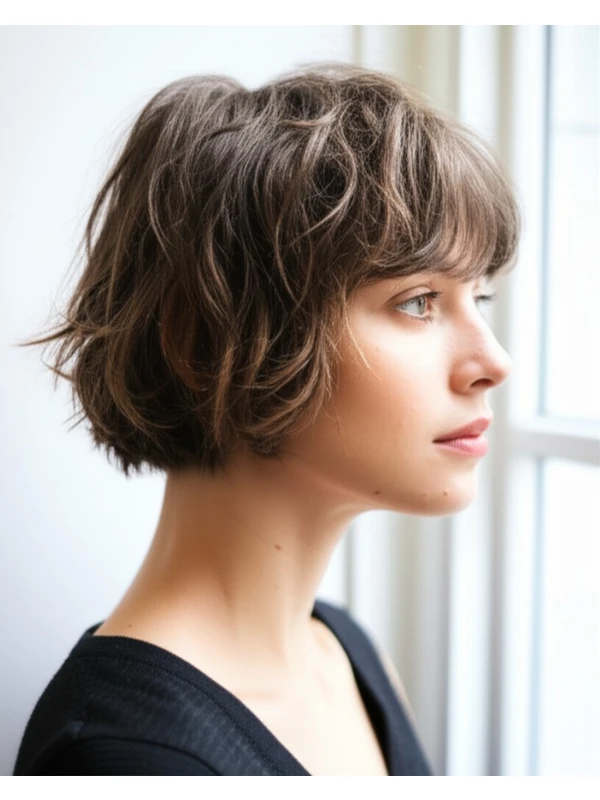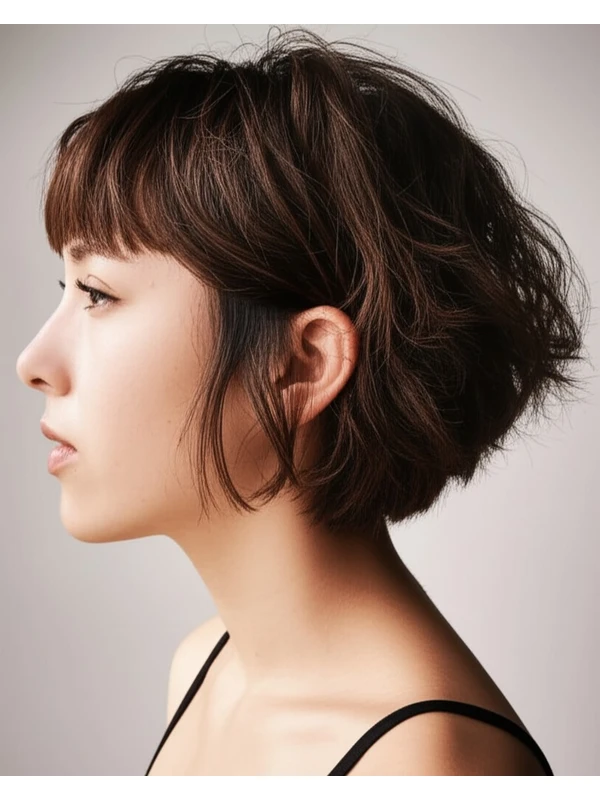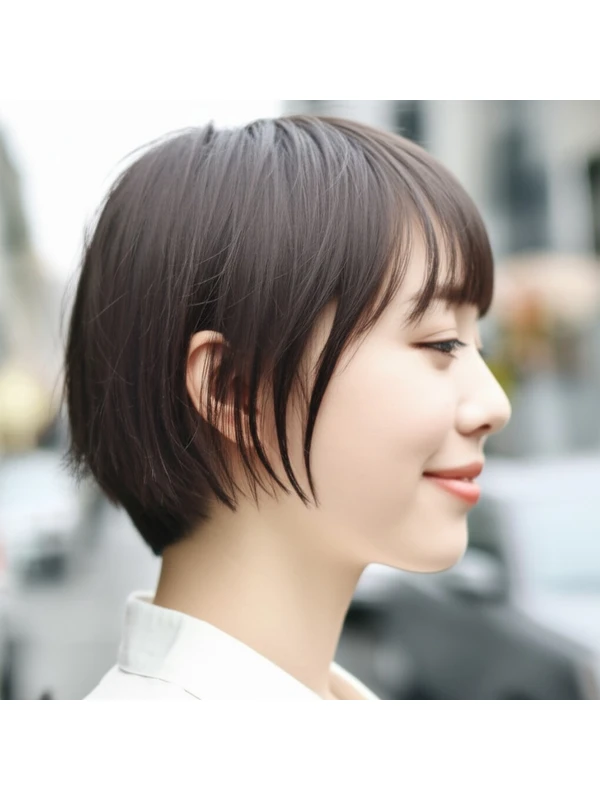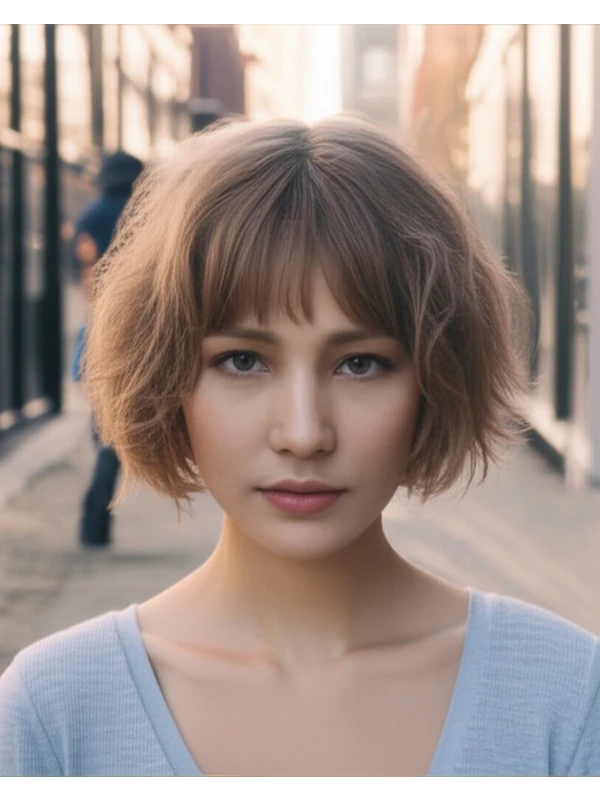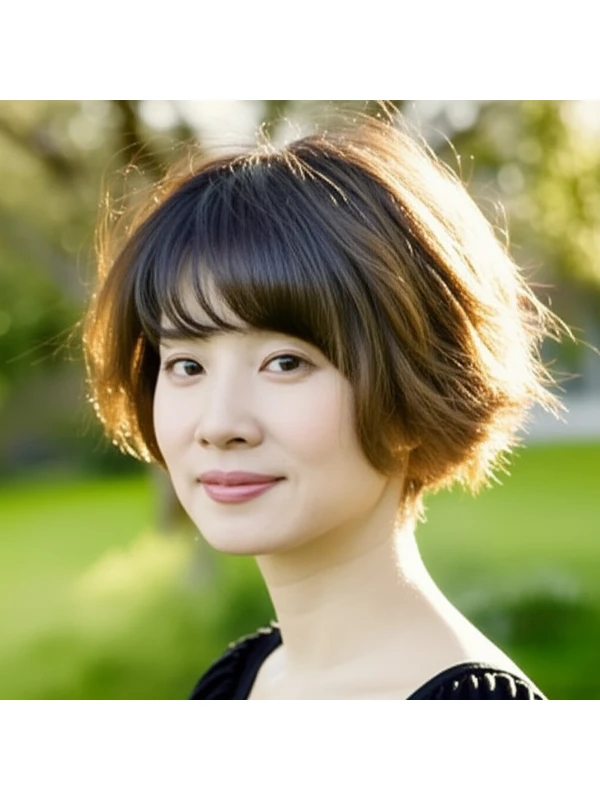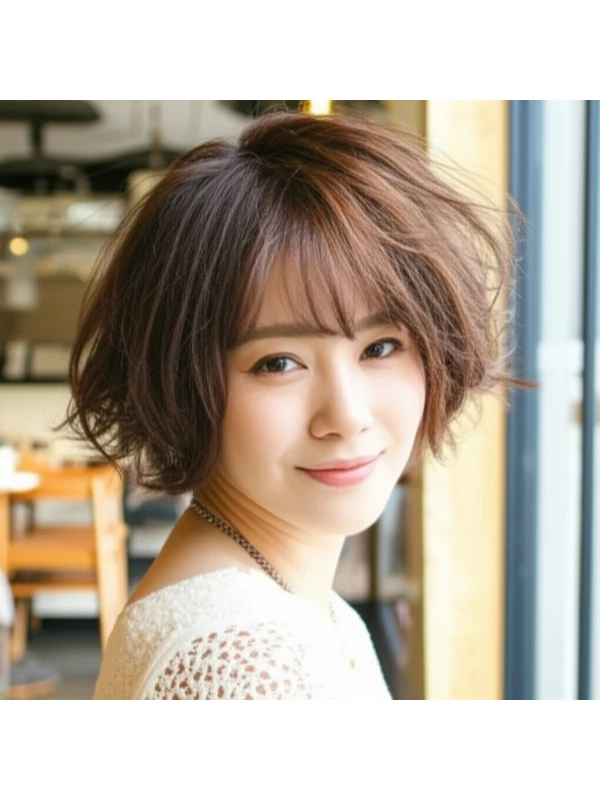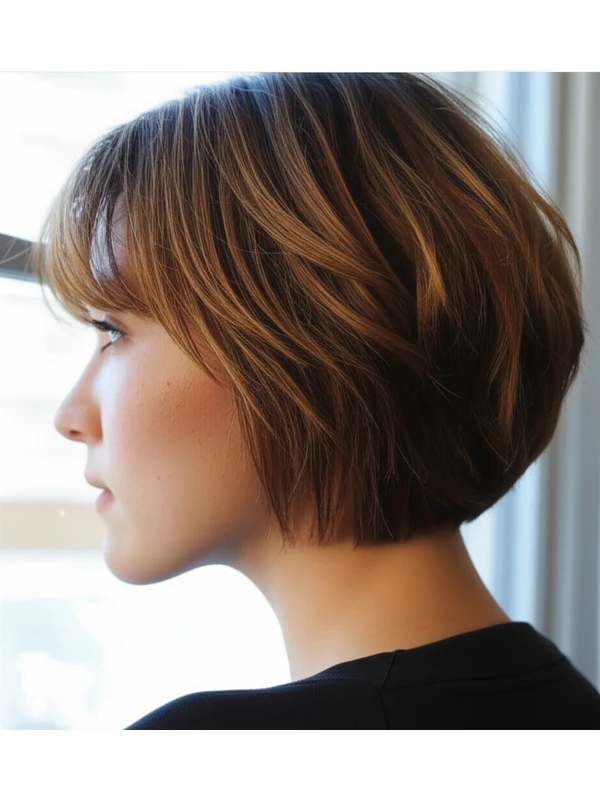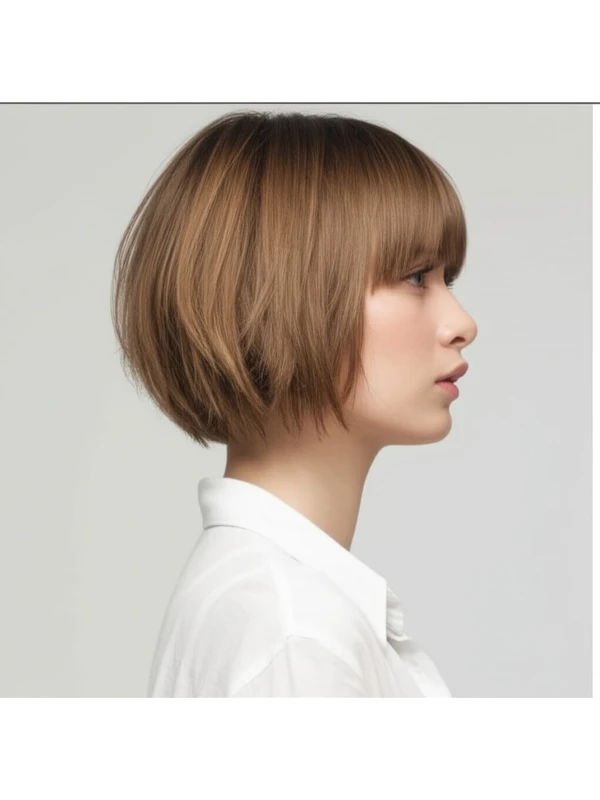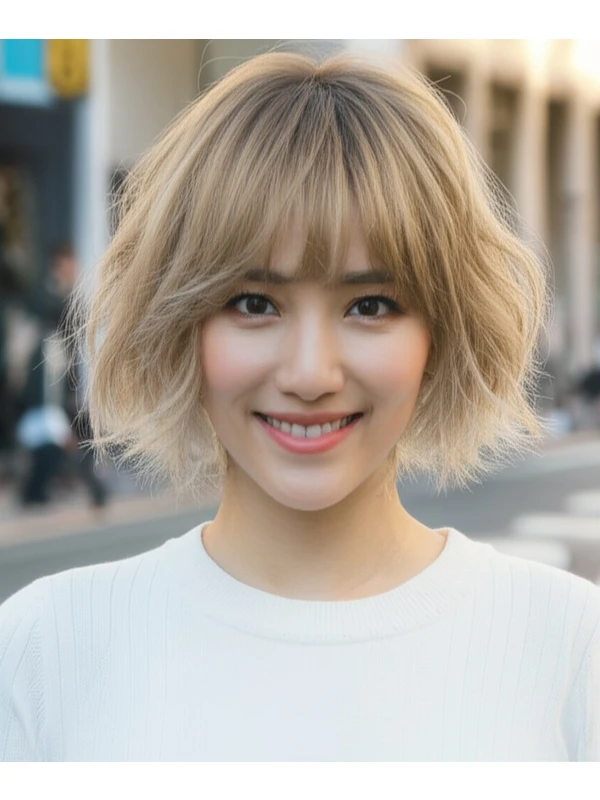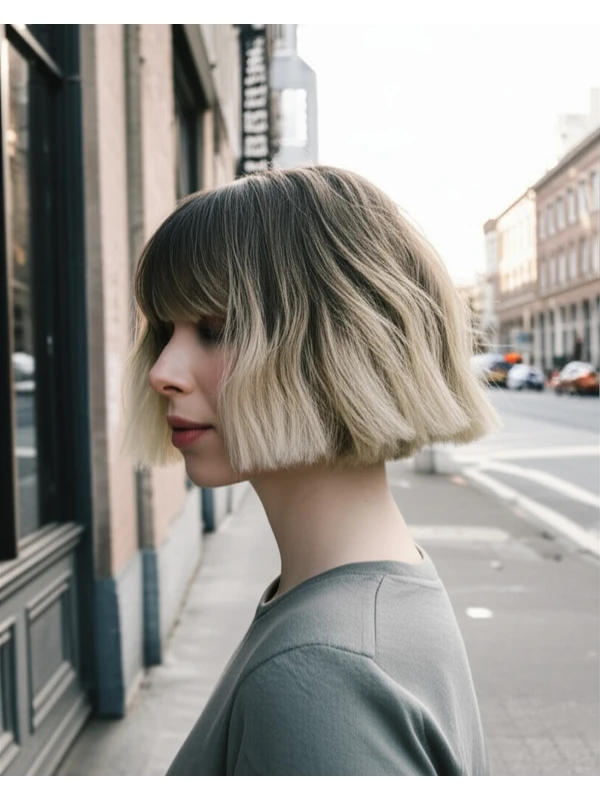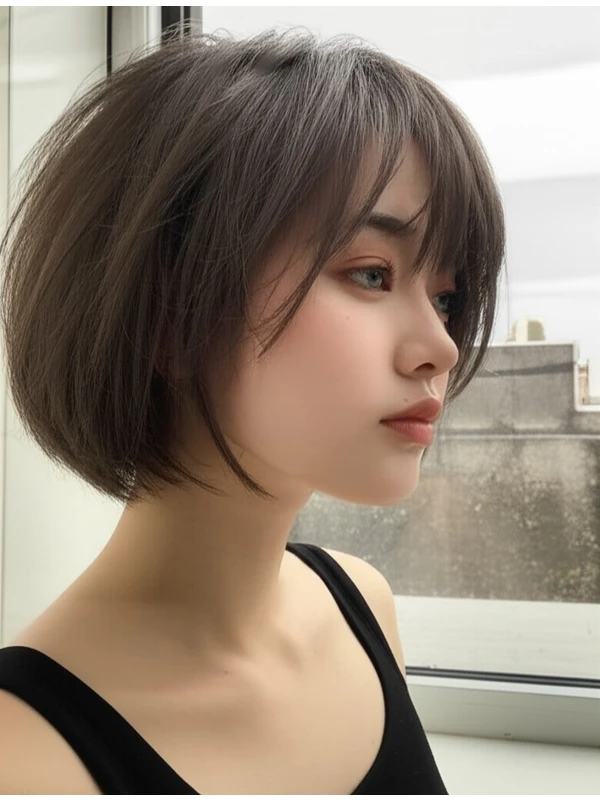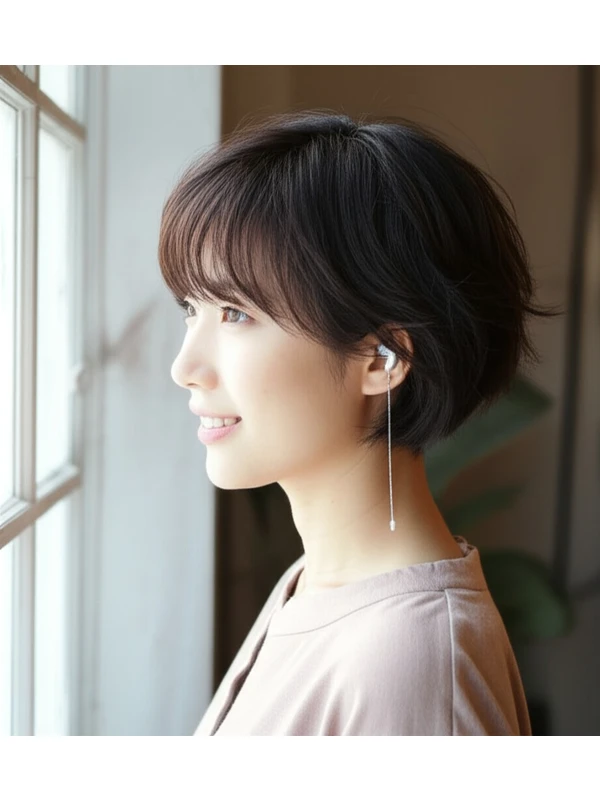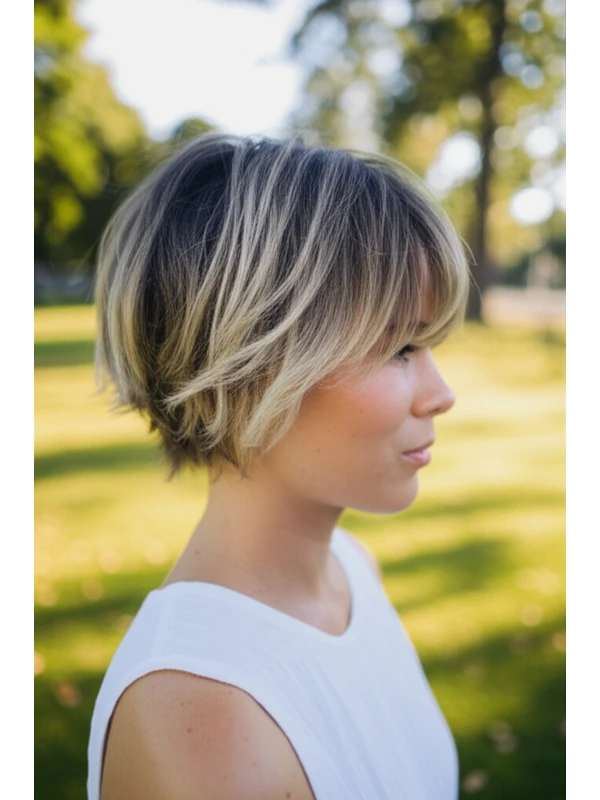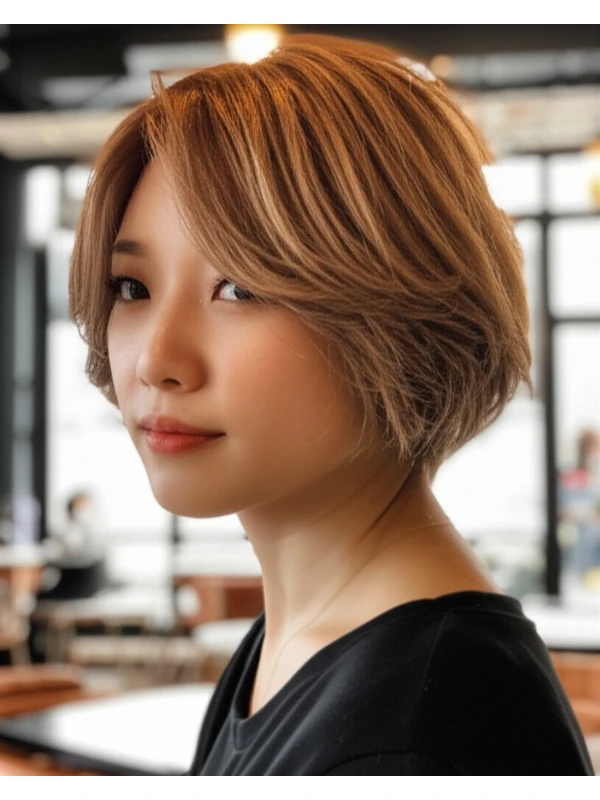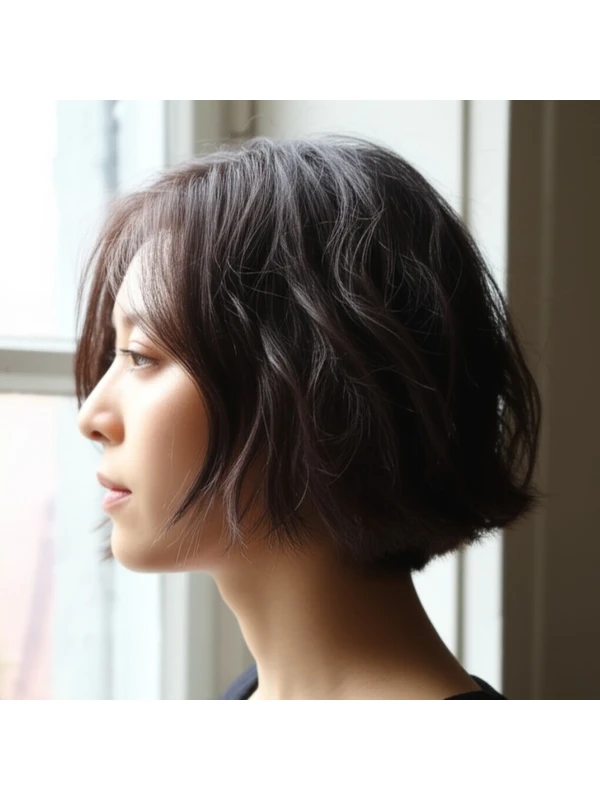#The Bob with Bangs: A Style Guide for Every Face & Hair Type
The bob with bangs is a timeless classic that continues to evolve, offering endless possibilities for personal style. Whether you're looking for a fresh update or a completely new look, this versatile haircut can be tailored to flatter almost anyone. Let’s dive into everything you need to know!
#1) Background & Definition: What Is A Bob with Bangs?
A bob is fundamentally a short-to-medium length hairstyle that's cut relatively straight around the head. The "with bangs" part simply means fringe (bangs) are incorporated into the overall style.
Key Features:
- Cut Geometry: Typically, bobs have a similar length all around, though variations exist (see Styling Variations below).
- Length Ranges: Generally falls between chin-length and collarbone-length. Shorter "micro-bobs" are also popular.
- Bangs: Can range from blunt, straight-across bangs to wispy, side-swept fringe or curtain bangs (longer, face-framing pieces).
- Alternative Names: Lob (long bob - often collarbone length), Blunt Bob, A-Line Bob (slightly longer in the front), French Bob.
#2) Face Shape Fit: Finding Your Perfect Bangs & Length
The beauty of a bob with bangs lies in its adaptability to different face shapes. Here's how it works for each:
- Oval: Lucky you! Most bobs and bang styles look fantastic on oval faces because they are considered balanced. Experiment freely with blunt, side-swept, or curtain bangs.
- Round: A bob with angled layers (shorter in the back, longer in front) can add length to a round face. Avoid chin-length bobs without shaping as this can emphasize roundness. Side-swept bangs are generally more flattering than blunt bangs.
- Square: Soften strong jawlines with layered bobs and curtain or wispy bangs that gently frame the face. Avoid blunt, harsh lines. A slightly longer bob (lob) is often a good choice.
- Heart: Chin-length or slightly longer bobs can balance a wider forehead common in heart-shaped faces. Side-swept or textured bangs help to soften the upper portion of the face.
- Diamond: Bangs that blend seamlessly into the hairline (like soft, feathered fringe) are ideal for diamond shapes as they add width to narrow cheekbones. A bob with layers will also create softness and movement.
- Oblong: Bobs with volume at the sides and chin-length or slightly longer styles can make a long face appear more balanced. Blunt bangs (if you're feeling bold!) can shorten the appearance of the face, but use caution—they might accentuate length too much for some.
#3) Body Proportions & Height Guidance: Tailoring to Your Silhouette
Your height and body proportions play a role in how a bob with bangs looks on you.
- Petite: Shorter bobs (chin-length or slightly above) can prevent the style from overwhelming smaller frames.
- Average Height: Most lengths work well! Consider your shoulder width – broader shoulders might benefit from layers to soften the look.
- Tall: Longer bobs (lob) and styles with more volume at the crown can help balance a taller stature.
- Narrow Shoulders: Layers around the face and shoulders add visual width. Avoid blunt, straight lines that can make shoulders appear narrower.
- Broad Shoulders: Soft layers and strategic placement of volume can create a softer silhouette. Avoid styles with excessive volume at the shoulder line.
- Neck Length: A shorter neck often looks best with bobs that aren't too long, avoiding anything that might make the neck appear even shorter. Longer necks can handle longer bobs more easily.
#4) Works Best With Hair Types & Densities: Understanding Your Texture
The bob with bangs is adaptable, but understanding your hair type and density is key to success.
- Straight: Sleek, blunt bobs look amazing on straight hair. Bangs can be styled precisely.
- Wavy: Layers are essential for a wavy bob to prevent it from looking triangular or bulky. Curtain bangs often work beautifully with natural waves.
- Curly/Coily: Bobs require careful shaping and layering to avoid a "pyramid" shape. Consider the shrinkage factor! A longer bob (lob) is often more manageable than a chin-length cut. Bangs can be tricky – consult with your stylist about how they will behave with your curl pattern.
- Fine Hair: Layers add volume, but too many can make hair look even thinner. Blunt bangs create the illusion of thickness.
- Medium Hair: Most styles work well!
- Thick Hair: Layers are crucial to remove weight and prevent a bulky appearance. Point-cutting techniques will help soften edges.
- Density & Shrinkage (Curls/Coils): Account for shrinkage! What appears short in the salon might be much longer when dry. Communicate your desired length after drying with your stylist.
#5) Styling Variations: From Sleek to Textured
The bob with bangs is a canvas for creativity!
- Sleek vs. Textured: Sleek bobs are polished and smooth, while textured bobs have more movement and piece-y layers.
- Middle vs. Side Part: A middle part creates symmetry, while a side part adds softness and volume.
- Fringe Variations: Blunt bangs, wispy bangs, curtain bangs, angled bangs – the possibilities are endless!
- Occasion Styling: A sleek bob with blunt bangs is perfect for work or formal events. A textured bob with side-swept bangs looks great casually.
#6) Maintenance: Keeping Your Bob Looking Fresh
- Trim Cadence: Every 4–8 weeks, depending on how quickly your hair grows and the style you want to maintain.
- At-Home Routine: Regular moisturizing is key, especially for dry or curly/coily hair.
- Heat vs. Air Dry: Minimize heat styling whenever possible. When using heat tools, always use a protectant spray.
- Product Checklist:
- Shampoo & Conditioner (suited to your hair type)
- Leave-in Conditioner (especially important for dry or curly/coily hair)
- Styling Cream or Mousse (for texture and hold)
- Finishing Serum or Oil (to smooth frizz and add shine)
- Estimated Daily Styling Time: 15–45 minutes, depending on your hair type and desired style.
#7) Grow-Out Roadmap: Evolving Your Look
- Months 1-3: The initial shape is most defined. Regular trims are essential to maintain the line.
- Months 3-6: The bob starts to lengthen. Bangs may require more frequent trimming as they grow out and lose their original shape. Consider softening the bangs or blending them into face-framing layers.
- Maintaining Shape: Communicate with your stylist about how you want the style to evolve during this period.
#8) Color Pairings: Enhancing Your Bob
- Cool Undertones (ash blonde, cool brown): Icy blondes and rich browns complement cool skin tones.
- Warm Undertones (golden blonde, caramel brown): Honey highlights or warm brunette shades enhance golden undertones.
- Low-Commitment Options: Balayage or babylights add dimension without a drastic color change.
#9) Season & Occasion Guide: Styling for Every Moment
- Spring/Summer: Lighter, brighter colors and textured styles are perfect for warmer weather. Consider soft, face-framing layers.
- Fall/Winter: Richer tones and sleek styles create a cozy vibe. Add shine with serums or oils.
- Work: Sleek, polished bobs with neat bangs convey professionalism.
- Weddings: Soft waves and romantic styling enhance the celebratory feel.
- Parties: Experiment with bold colors, textured layers, and playful bang styles!
#10) Cost & Time: Salon Investment
- Salon Time: Typically 1.5 – 3 hours, depending on complexity of cut and color.
- Price Range: Expect to pay a moderate-to-high price for this style (relative to other haircuts).
#11) Pros & Cons: Weighing the Trade-offs
Pros:
- Versatile and adaptable to various face shapes and hair types.
- Timeless and classic style.
- Can be customized with different bangs and layering techniques.
- Often flattering for a wide age range.
Cons:
- Requires regular trims to maintain shape.
- Styling can take time, depending on hair type and desired look.
- Bangs require extra attention and styling (especially initially).
#12) Salon Consultation Script: Questions to Ask Your Stylist
Here are some prompts for your salon consultation:
- “I’m interested in a bob with bangs. What length would you recommend based on my face shape?”
- "What type of bangs would best flatter my features?"
- "How will this style work with my hair texture and density?"
- "Can we discuss how to maintain the shape between cuts?"
- “I’m concerned about [specific issue, e.g., shrinkage, fine hair]. How can we address that?”
#FAQs: Your Burning Questions Answered
- Are bangs difficult to style? It depends on your hair type! Some people find them easy, while others need a little practice and styling products.
- Can I get a bob with bangs if I have thin hair? Yes, but layers are crucial for volume.
- How long will it take to grow out bangs if I don’t like them? Around 6-8 weeks for full regrowth.
- What's the difference between curtain bangs and side-swept bangs? Curtain bangs frame the face on both sides, while side-swept bangs are angled across the forehead.
- Will a bob with bangs make my hair look shorter or longer? It depends! Shorter bobs can add length, while blunt bangs can visually shorten the face.
- Can I get a bob with bangs if I have curly/coily hair? Absolutely! But discuss your curl pattern and shrinkage concerns with your stylist for best results.

